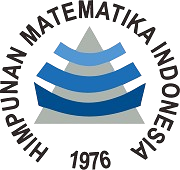Teachers’ Perception Towards The Use of Tarsia Puzzle to Create Joyful Learning of Mathematics
DOI:
https://doi.org/10.30736/voj.v3i1.347Keywords:
Elementary School, Joyful Learning, Tarsia PuzzleAbstract
This research aims to determine whether Tarsia puzzle can be used to create joyful learning of mathematics according to elementary school teachers’ perception.Fortytwo elementary school teachers who teach at different schools in Bangkalan, Madura were surveyed. In this survey research, data about teachers’ perception were collected usinga questionnaire with 16 close-ended items (Likert Scale 1 – 4). Descriptive statistics consisting of percentages and means were used to analyze the data. The results showed that teachers agreed that Tarsia puzzle can help teachers to create joyfullearning of mathematics in elementary school.However, some of them stated that they had lack confidence and competence in using Formulator Tarsia.Downloads
References
Ariawan, V. A. N., & Pratiwi, I. M. (2017). Implementing Joyful learning Strategy Using Treasure Clue Game Method in Order to Improve Reading Comprehension Skill. Jurnal Prima Edukasia, 5(2), 203–210. https://dx.doi.org/10.21831/jpe.v5i2.11601
Asri, D. C., Rahman, B., &Wijaya, S. (2020). Perbedaan Kemampuan Berpikir Kreatif Melalui Pembelajaran Matematika Berbantuan Puzzle dan Geogebra. Vygotsky, 2(2), 78-89. http://dx.doi.org/10.30736/vj.v2i2.223
Ball, L & Stacey, K. (2005). Technology-supported mathematics learning environment. Reston, VA: NCTM
Berney, S., & Bétrancourt, M. (2016). Does animation enhance learning? A meta-analysis. Computers and Education, 101, 150–167. https://doi.org/10.1016/j.compedu.2016.06.005
Bhakti, C. P., Ghiffari, M. A. N., & Salsabil, K. (2019). Joyful Learning: Alternative Learning Models to Improving Student’s Happiness. Jurnal VARIDIKA, 30(2), 30–35. https://doi.org/10.23917/varidika.v30i2.7572
Buckley, P., & Doyle, E. (2016). Gamification and student motivation. Interactive Learning Environments, 24(6), 1162-1175. https://doi.org/10.1080/10494820.2014.964263
Candiasa, I.M., Satiyadnya, N., & Sunu, G.K.A. (2018). Using puzzle to encourage students to do problem posing. IOP Conf. Series: Journal of Physics Series 1040. https://doi.org/10.1088/1742-6596/1040/1/012025
Chen, A. N. & Tsai, C. (2009). Knowledge infrastructure of the future (Guest Editorial). Journal of Educational Technology & Society, 12(1), 1–4
Clark, R. C., & Mayer, R. E. (2008). Learning by viewing versus learning by doing: Evidence-based guidelines for principled learning environments. Performance Improvement, 47(9), 5–13. https://doi.org/10.1002/pfi.20028
Cope, L. (2015). Math Manipulatives: Making The Abstract Tangible. Delta Journal of Education, 5(1), 10-19
Frenzel, A. C., Pekrun, R., Goetz, T., Daniels, L. M., Tracy, L., Becker-kurz, B., & Klassen, R. M. (2016). Measuring Teachers' Enjoyment, Anger, and Anxiety: The Teacher Emotions Scales (TES). Contemporary Educational Psychology, https://doi.org/10.1016/j.cedpsych.2016.05.003
Ghavifekr, S., Athirah, W., & Rosdy, W. (2015). Teaching and Learning with Technology : Effectiveness of ICT Integration in Schools. International Journal of Research in Education and Science (IJRES), 1(2). 175-191
Gorev, P. M. (2018). Puzzles as a Didactic Tool for Development of Mathematical Abilities of Junior Schoolchildren in Basic and Additional Mathematical Education. EURASIA, 14(10), 1–12. https://doi.org/10.29333/ejmste/93675
Hasler, H. M., & Akshoomoff, N. (2019). Mathematics ability and related skills in preschoolers born very preterm. Child Neuropsychology, 25(2). 162–178. https://doi.org/10.1080/09297049.2017.1412413
Hermitech Laboratory. (2003). Information on Formulator Tarsia. Retrived from http://www.mmlsoft.com/index.php/products/tarsia
Hill, J. E. & Uribe-florez, L., U. (2020). Understanding Secondary Teachers’ TPACK and Technology Implementation in Mathematics Classrooms. International Journal of Technology in Education (IJTE), 3(1), 1-13
Howard, S. K. & Mozejko, A. (2015). Teachers: technology, change and resistance. In M. Henderson & G. Romeo (Eds.), Teaching and Digital Technologies: Big Issues and Critical Questions (pp. 307-317). Port Melbourne, Australia: Cambridge University Press
Kirikkaya, E. B., Işeri, Ş., & Vurkaya, G. (2010). A board game about space and solar system for primary school students. Turkish Online Journal of Educational Technology, 9(2), 1–13
Lee, J. E. (2017). Preschool Teachers ’ Pedagogical Content Knowledge in Mathematics. International Journal of Early Childhood. https://doi.org/10.1007/s13158-017-0189-1
OECD. (2019). PISA 2018 Results. Combined Executive Summaries. Journal of Chemical Information and Modeling, 53(9), 1689–1699, www.oecd.org/about/publishing/corrigenda.htm
Putra, I. S. (2020). Improve Student’s Learning Using Media for Understanding and Interest in Pythagorean Theorem Learning. Vygotsky, 2(2), 66-77. https://doi.org/10.30736/vj.v2i2.222
Putri, R.S., Purwanto, A., Pramono, R., Asbari, M., Wijayanti, L. M., & Choi, C. H. (2020). Impact of the COVID-19 Pandemic on Online Home Learning : An Explorative Study of Primary Schools in. International Journal of Advanced Science and Technology, 29(5), 4809 – 4818
Rasmitadila, Aliyyah, R.R., Rachmadtullah, R., Samsudin, A., Syaodih, E., Nurtanto, M., & Tambunan, A.R.S., (2020). The Perceptions of Primary School Teachers of Online Learning during the COVID-19 Pandemic Period : A Case Study in Indonesia, Journal of Ethnic and Cultural Studies, 7(2), 90 – 109, https://doi.org/10.29333/ejecs/388
Russo, J., Bobis, J., Sullivan, P., Downton, A., Livy, S., McCormick, M., & Hughes, S. (2020). Exploring the relationship between teacher enjoyment of mathematics, their attitudes towards student struggle and instructional time amongst early years primary teachers. Teaching and Teacher Education, 88, 102983. https://doi.org/10.1016/j.tate.2019.102983
Sengul, S., & Argat, A. (2015). The Analysis of Understanding Factorial Concept Processes of 7th Grade Students who have Low Academic Achievements with Pirie Kieren Theory. Procedia - Social and Behavioral Sciences, 197 (February), 1263 – 1270. https://doi.org/10.1016/j.sbspro.2015.07.398
Setyaningrum, W. & Waryanto, N. H. 2017. Developing Mathematics Edutainment Mediafor Android based on Students‟ Understanding and Interest: A Teachers‟ Review. IOP Conf. Series: Journal of Physics Series 983, https://doi.org/ 10.1088/1742-6596/983/1/012093
Simamora, R. E., Saragih, S., & Hasratuddin, H. (2018). Improving Students’ Mathematical Problem Solving Ability and Self-Efficacy through Guided Discovery Learning in Local Culture Context. International Electronic Journal of Mathematics Education, 14(1), 61–72. https://doi.org/10.12973/iejme/3966
Stoten, D. W. (2017). Tarsia : An Interactive and Engaging Activity That Promotes Consolidation of Knowledge. Management teaching Review, 1–10. https://doi.org/10.1177/2379298117697000
Trigwell, K. (2012). Relations between teachers’ emotions in teaching and their approaches to teaching in higher education. Instructional Science, 40(3), 607–621. https://doi.org/10.1007/s11251-011-9192-3
UNESCO Institute for Statistics. (2017). Literacy rates continue to rise from one generation to the next. UNESCO. Retrived from http://uis.unesco.org/en/news/international-literacy-day2017
Widyawulandari, R., -, S., & Indriayu, M. (2019). Implementation of Joyful Learning Approach in Providing Learning Motivation for Elementary School Student. Advances in Social Science, Education and Humanities Research, 277, 54–58. https://doi.org/10.2991/steach-18.2019.12
Wei, C. W., Hung, I. C., Lee, L., & Chen, N. S. (2011). A joyful classroom learning system with robot learning companion for children to learn mathematics multiplication. Turkish Online Journal of Educational Technology, 10(2), 11–23
Yabo, R. S. (2020). The Joyful Experience in Learning Mathematics. Southeast Asian Mathematics Education Journal, 10(1), 55 - 68, https://doi.org/10.46517/seamej.v10i1.85
Zhao, Y. & Frank, K. A. (2003). Factors Affecting Technology Uses in Schools: An Ecological Perspective. American Educational Research Journal, 40(4), 80 - 840, https://doi.org/10.3102/00028312040004807
Downloads
Published
How to Cite
Issue
Section
License
Copyright:
Authors who publish their manuscripts in this Journal agree to the following conditions:
- Copyright of any article on Vygotsky: Jurnal Pendidikan Matematika dan Matematika is held solely by the author under the Creative Commons Attribution 4.0 International license (CC BY NC SA).
- Authors can submit papers separately, arrange non-exclusive distribution of manuscripts that have been published in this journal into other versions (e.g. sending to the author's institutional repository, publication in a book, etc.) by acknowledging that the manuscript has been published for the first time in Vygotsky: Jurnal Pendidikan Matematika dan Matematika.
License:
Vygotsky: Jurnal Pendidikan Matematika dan Matematika is published under the terms of the Creative Commons Attribution 4.0 International License (CC BY NC SA). This license permits anyone to copy and redistribute this material in any form or format, compile, modify and develop this material for any purpose as long as it is not for commercial purposes. Additionally, anyone must provide credit and distribute contributions under the license of the creator of the original work.











